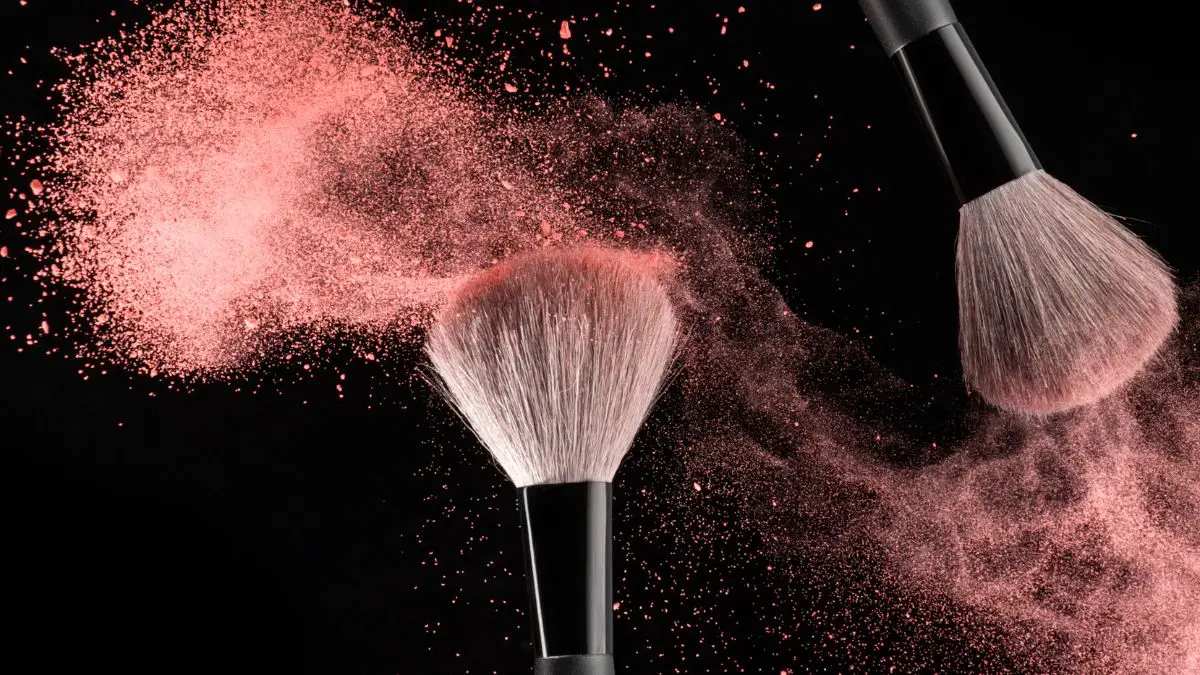Coolest Make Up Science Fair Projects for High Schoolers (+ Printable Chart!)
What’s in a tube of makeup?
Depends on who you ask! Most see it as the secret of oomph and a recipe of attractiveness.
If you asked a man in Egypt or China 7,000 years ago, they’d probably have quoted social status or magic that their pigmented powders symbolized.
But if you ask a scientist today, they’ll tell you a rich story of chemical compounds. Good compounds, bad compounds, how they interact with one another AND our body.
From a historical context to a much more complex human psychology, cosmetics can be a great way to explore the world of chemistry and various other branches of science.
With just a little bit of imagination and some well-placed questions, we can learn so much from makeup, what it constitutes, and its overall use throughout the ages, and in modern-day society.
Related Post: Periodic Table of Elements Project Ideas & Activities (4 Quick & Cool Options)
2 Out-Of-The-Box Makeup Science Experiments
#1 Comparing Homemade and Store-Bought Foundations
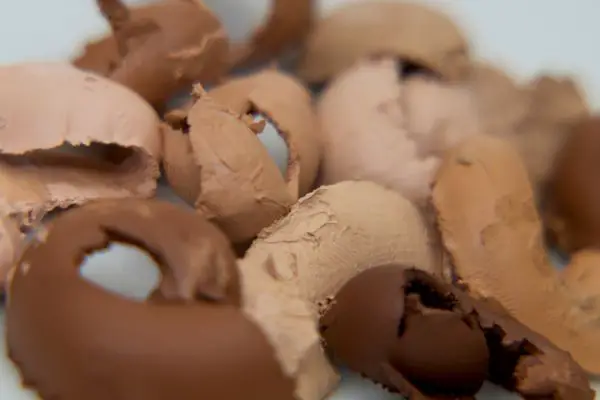
Age range: 13-18 | High-School
The ingredients of modern-day makeup products have weird chemical names that sometimes scare us. But if there’s something scarier than the names, it’s their contents!
The different sulfates, formaldehyde, and fragrances found in foundations can irritate the skin, clog up pores, and can increase acne breakouts.
If you want your skin to stay healthy you should avoid buying foundations that contain sodium sulfates, parabens, petroleum distillates, formaldehyde, and fragrances.
These chemicals increase the price of store-bought foundations, and they can be quite expensive if you don’t know where to look. That’s why some turn to homemade foundations.
You’d be surprised to know that healthy foundations can be made at home, with well-known ingredients available to everyone.
Materials needed:
- Non-nano zinc oxide;
- Yellow iron oxide;
- Red iron oxide;
- Brown iron oxide;
- 0.08oz Shea butter;
- 0.15oz Jojoba oil;
- Small glass jar;
- Mortar and pestle;
- Melting pot;
- Measuring spoons;
- Foundation make up brushes;
- Store-bought foundation;
- 2 Petri dishes;
- Microscope.
Procedure:
First step: Making the foundation
- Mix 0.08oz of shea butter and 0.15oz of jojoba oil in a melting pot, and melt until liquid.
- In a mortar, mix 0.1oz of non-nano zinc oxide, and combine yellow, red, and brown iron oxide to match your shade.
- Pour the molten shea butter and jojoba oil into the mortar, and with a pestle, combine the dry and liquid ingredients, until you’re left with a soft amalgamate.
- Allow the foundation to dry completely and you’re ready to start with the experiment.
This is just one of many DIY foundation recipes. You can find other variations to experiment with!
Second step: Comparing homemade and store-bought foundations
Let’s start the testing!
- Apply the homemade foundation on the right side of your face and the store-bought on your left side.
- While applying the foundations, notice and rate the following factors from 1 to 10. You will be rating every quality from 1 to 10, 1 being worst, and 10 being best.:
- Formula;
- Consistency;
- Coverage;
- Pigmentation;
- Smoothness;
- Layering;
- Shine;
- Longevity.
- Compare the results, and get to a conclusion: which foundation is better?
For your convenience, we have created a printable chart in which you can rate the foundation qualities yourself!
Final step: Under the microscope
- Prepare the Petri dishes for use.
- On the first Petri dish drop, a few drops of the store-bought foundation spread it in a zig-zag motion, and store it in a cold place (a refrigerator works just fine).
- On the second dish place a few drops of the homemade foundation spread it in a zig-zag motion, and once again store it in a cold place.
- Leave the Petri dishes to rest and cultivate bacteria for 4-6 days.
- After the cultivation period, prepare the microscope and observe the Petri dishes. Notice the different kinds of bacteria cultures.
- Compare the Petri dishes. Which Petri dish has more bacteria cultures?
- Extra step: If you have access to a laboratory, examine and label the bacteria cultures.
You can use cocoa powder instead of brown iron oxide, turmeric instead of yellow iron oxide, and cayenne or beetroot powder instead of red iron oxides.
These natural ingredients improve the skin, their anti-inflammatory properties can decrease redness and acne and can increase the production of collagen in your skin.
The amounts of shea butter and jojoba oil are relative. You can change their ratio to get the desired result. If you want a more liquid foundation, use more jojoba oil and vice versa.
You can use different kinds of essential oils to fit your skin type. For oily skin, prone to acne breakouts, use rosemary and frankincense essential oils to soothe your skin. For dry skin: use lavender and cucumber seed essential oils to hydrate your skin to the max.
With their natural ingredients and natural essential oils, homemade foundations can be used as healthy ointments for up to a month.
Homemade foundations can be perfectly tailored to fit your skin type, and skin shade, and in the end, your skin will thank you for choosing a healthier option. Plus it’s way cheaper than most foundations found at your local stores!
#2 Can Ancient Egyptian Makeup Conduct Electricity?
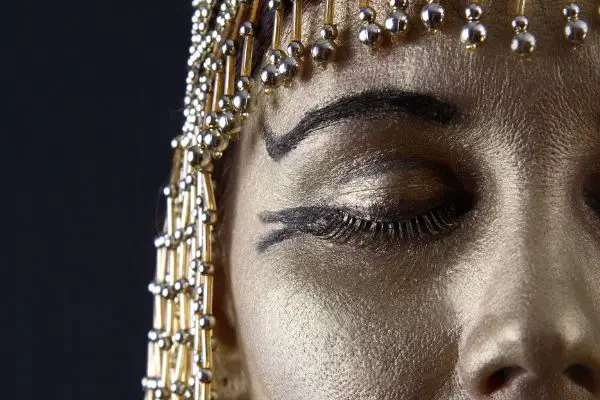
Age range: 13-18 | High-School
The history of skincare and makeup goes way back in time. The first recorded use of skin care products was in 4000 BC when men and women (especially men!) in Ancient Egypt used different concoctions to keep a younger-looking appearance.
Yes, they also did everything they could to keep their skin soft and beautiful. Cleopatra even used mule milk and honey to keep her skin godlike!
But what do we know about their make up?
Ancient Egyptians knew a thing or two about makeup. They had everyday rituals of grinding crystals and mixing them with animal fat to prepare different makeup products.
They didn’t use make up solely for aesthetic reasons. They knew that dark makeup reflected sunlight, and used their homemade Galena kohl eyeliner for protection against the piercing UV rays.
Galena is a crystal that contains high amounts of Lead Sulfates, and Silver in its structure. Lead sulfates act as toxins that help the immune system by raising nitric oxides in the body which fight different bacterial infections and even diseases that could lead to blindness and death.
Galena is not only a crystal. It’s a metal that has been used for centuries. Its metalloid characteristics make it perfect for this experiment.
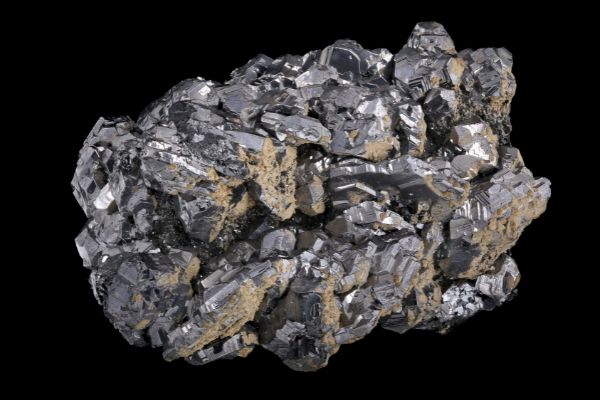
Hypothetically speaking, these metalloid crystals have the ability to conduct electrical energy, so let’s test that!
Materials needed:
- Lapis Lazuli crystals;
- White Quartz crystals;
- Galena crystals;
- Malachite crystals;
- Shea butter;
- Coconut oil;
- Protective gloves;
- Safety glasses;
- Mortar and pestle;
- Hammer;
- Cloth;
- 4 Borosilicate Petri dishes;
- Oscilloscope;
- Phone camera;
- Tripod.
Procedure:
First step: Preparations
- Prepare all the needed materials and wait for the sun to go down. This experiment should be done outside, in a dim setting.
- Prepare the camera on your phone to film a slow-motion video.
Second step: Making the eyeshadow
- Put on your gloves and safety glasses.
- Place the lapis lazuli crystal on a cloth.
- Turn on the camera, and start filming.
- With a hammer, hit the crystal as hard as you can. Repeat until the crystal is a fine powder.
- Stop filming. And move into a brightly lit room.
- In a mortar, pour the crushed lapis lazuli, and add half a teaspoon of shea butter.
- With a pestle, grind the Lapis Lazuli and shea butter, until silky smooth.
- Pour the mixture into a borosilicate Petri dish.
Repeat all of the steps for every crystal.
Final step: Testing their electric properties
- Prepare the oscilloscope, and place the probes on opposite sides of the borosilicate Petri dish.
- Turn on the oscilloscope.
- Observe the oscilloscope, and write down the reactions of every Petri dish.
- Discuss the different energies of the crystals shown on the oscilloscope.
You can modify this experiment by using different kinds of crystals, whether they have metallic or non-metallic properties.
White quartz, lapis lazuli, malachite, and galena are known for their beauty, and (allegedly) healing properties. But they are also a perfect example of how crystals have an electrical charge in them.
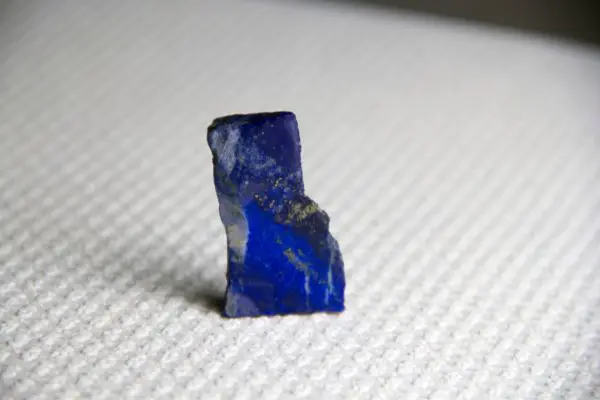
When applying mechanical pressure, their structure undergoes some shocks and it generates light and heat, and even produces its voltage. This is called a piezoelectric effect which occurs in many crystals.
It’s crazy to think that even everyday makeup used in ancient times could be used for conducting electricity and even producing energy!
This experiment proves that human knowledge has grown to a massive extent, and even things like everyday makeup products have undergone various changes throughout history.
In comparison with today’s make up industry, they didn’t have as many safety guidelines, and they didn’t know about the dangers of using toxic crystals.
Makes you wonder, how many cultures have used hazardous materials for making their makeup?
Frequently Asked Questions
How is makeup related to science?
The science-y logic of cosmetics is simple: while aesthetics and imagination tell you how to make something beautiful, you need science to figure out how to make it healthy and safe. In other words, you need advanced chemistry!
Amusingly enough, there’s an International Nomenclature of Cosmetic Ingredients Dictionary that lists out all the natural ingredients that are used in cosmetics.
There are more than 20,000 thousand names on that list. Makes you wonder how the cosmetic industry still comes up with more products for our skin!
We can categorize the chemical compounds in cosmetics into 3 simple groups: functional, aesthetic, and the so-called ‘claims’ ingredients.
Functional ingredients consist of helpful chemicals that benefit our skin and health and are usually colorants, cleansers, conditioning agents, reactive chemicals, and other drugs. Most cosmetics have some of these beneficial compounds, as they are regulated by the FDA.
Aesthetic ingredients, as the name suggests, basically serve as ‘carriers’ that help to make the functional compounds more pleasing for use, either by visual characteristic or by feel. They can be solvents, thickeners, fragrances, fillers, modifiers, etc.
Claims ingredients are generally more of a legal loophole. The manufacturer adds a very minimal (if all) amount of vitamins, minerals, and natural extracts just to get the FDA to put their names on the packaging. Makeup experts call it ‘fairy dust’, and this is solely for marketing purposes.
Which makeup products can I use if I have acne-prone skin?
Using makeup products every day can inflame your skin even more. So picking out the right skin care products can be tricky.
When choosing makeup products, check their ingredient list. You should avoid makeup products that contain benzaldehyde, acetylated lanolin, silicone, sodium chloride, fragrances, and formaldehyde.
Instead, you should choose makeup products that contain glycolic acid, retinoids, salicylic acid, niacinamide, tea tree essential oils, and rosewater.
These ingredients can hydrate the skin, their anti-bacterial properties can decrease acne breakouts, and they will leave you with healthy, glowing skin.
How to tell if my homemade foundation has bacteria in it?
Most homemade foundations have natural ingredients that can expire and cultivate bacteria cultures after some time.
Discoloration, weird smell, and weird consistency are all indicators that your foundation has expired. Before putting on the foundation, check how it smells and how it feels on your hand.
To prevent bacteria and extend the lifespan of your foundation, you should wash your hands before applying it. When you’re done, close the lid tightly and store it in a dark place.
You should avoid sharing your foundation with others, everyone has different bacteria on their skin and even slight changes in the foundation and other products can lead to infections and inflammation of the epidermis.

